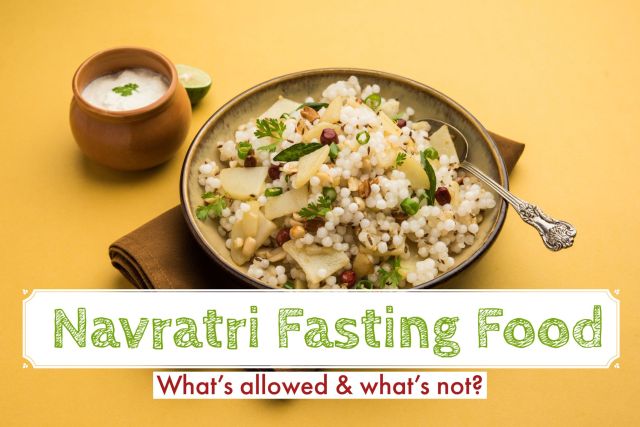High Protein & High Fibre Sabudana (tapioca pearls) recipe for the Navratri season. It is nutritious, made with little oil, and has the goodness of spinach too. We often make Sabudana Khichdi and Kheer during the Navratri fasting season. This time, indulge yourself in this easy and delicious Sabudana Thalipeeth. It is easy to make and tastes very good when hot. You don’t need any chutney or any dip with this.
What is Sabudana or Tapioca Pearls?
Sabudana is a small white pearl-shaped food item made with the starch of tapioca tree roots. The starch extracted from the roots is processed into small, round pearls or granules. The Tapioca tree is also known as the cassava tree. This tree is found mostly in Southern India.
It is also known as Tapioca Pearls or Sago. Sabudana is commonly used in Indian cuisine, especially during religious fasting periods. It has a unique texture – soft and chewy with a firm center. It is often used to make Sabudana Vada, Sabudana Thalipeeth, Sabudana Khichdi, and Kheer.
How to soak and soften Sabudana or Tapioca Pearls?
Tapioca pearls are made with the starch of tapioca or cassava roots. That is why, they tend to become sticky and mushy while cooking. Soaking is an important step to remove their excess starch and soften them. Below are the steps on how to soak and soften Sabudana.
- Rinse Sabudana: Rinse Sabudana 2 to 3 times with water to remove the excess starch.
- Soak In Water: Transfer rinsed Sabudana to a large bowl and completely submerge them in water. Leave it for 3 to 4 hours to absorb water and become soft. After soaking, they become plump and translucent like white pearls.
- Check For Softness: After soaking, check the softness by pressing a Sabudana pearl between your fingers. It should easily mash and flatten without any hard or uncooked center. If it is still hard in the center, let it soak for a little longer until fully softened.
- Drain Excess Water: Once softened, drain the excess water using a colander or any fine mesh sieve. Now you can use them in your recipes.

Note:
Sabudana comes in different varieties – small, medium, and large size. Because of that, the soaking time and the texture after soaking varies. Some varieties result in translucent pearls while some only become soft and expand after soaking.
You can also soak them for 2 hours, drain off the excess water, cover and let them rest overnight. After a few hours of resting, they become soft and ready to cook.
What is the Navratri Festival?
Navratri (also known as Navaratri or Navrate), is a joyous Hindu festival. It is celebrated over 9 to 10 days. “Navratri” is a word from the Sanskrit language – Nav means nine and Ratri means night. This festival is celebrated two times a year, once in the spring (Chaitra Navratri) and once in the autumn (Sharad Navratri). Sharad Navratri falls during September or October and is widely celebrated all across India.
One of the main aspects of Navratri is fasting (known as Vrat or Upvas). During fasting, devotees avoid eating some foods, like grains, pulses, onions, garlic, alcohol, and non-vegetarian items. But they eat fasting food items like fruits, nuts, dairy products, etc.

What food items are allowed (or not) in Navratri?
Food items that are not allowed during the Navratri season are as follows:
- Onion and Garlic: They are Tamsik in nature and hence not consumed.
- Lentils and Pulses like moong dal, chana dal, kidney beans, chickpeas, etc.
- Grains and their flours like wheat flour, gram flour (besan), etc.
- Eggs, Non-Vegetarian Food Items like chicken.
- Alcohol (some people avoid smoking too).
- Salt
- Canned Food Items
Food items that are allowed during the Navratri season are as follows:
- Vegetables like potato, tomato, arbi, cucumber, carrot, bottle gourd, eggplant, pumpkin, etc.
- Fruits
- Dairy Products
- Coconut
- Nuts and Seeds
- Quinoa, Buckwheat, Little Millet (Samai or Samak), Water Chestnut Flour (Singhade Ka Aata).
- Spices like cumin seeds, red chili powder, turmeric powder, cardamom, carom seeds (ajwain), cinnamon, cloves, black pepper, etc.
- Rock Salt
Everybody has their own beliefs and follows their own rules during the fasting period. That is why, I suggest you adjust the recipes based on how you follow your fasting and celebrate Navratri.

Is this recipe vegan-friendly?
Yes. All the ingredients used in this recipe are plant-based and vegan.
More Navratri Fasting Recipes
- Kuttu (Buckwheat Flour) Cheela
- Quinoa Pulao
- Amaranth and Dates Energy Bars
- Quinoa Cutlets
- Ultra-Soft Kuttu Ki Roti Without Potatoes (Buckwheat Flour Tortilla)

Conclusion
This Sabudana Khichdi recipe is a perfect meal for Navratri because of its ease of cooking. It is a delightful blend of flavors and texture. You can enjoy it for breakfast, wholesome lunch, or a quick dinner. It is light, fulfilling, and gives an instant boost of energy.
Grab all the ingredients because you are ready to make this delicious Navratri fasting recipe at home.
If you try this recipe, please share your reviews in the comment section below. Do share a photo on Instagram and tag us @thefearlesscooking. We love seeing your recreation of our recipes.
Happy Cooking. 🙂
Love from us.
Richa













Tell us what you think